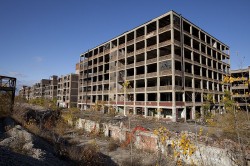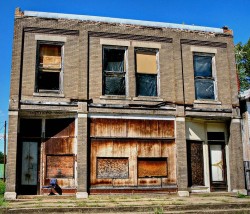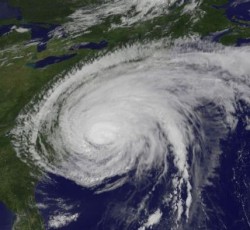 The U.S. economy is dying and most American voters have no idea why it is happening. Unfortunately, the mainstream media and most of our politicians are not telling the truth about the collapse of the economy. This generation was handed the keys to the greatest economic machine that the world has ever seen, and we have completely wrecked it. Decades of incredibly foolish decisions have left us drowning in an ocean of corruption, greed and bad debt. Thousands of businesses and millions of jobs have left the country and poverty is exploding from coast to coast. We are literally becoming a joke to the rest of the world. It is absolutely imperative that we educate America about what is happening. Until the American people truly understand the problems that we are facing, they will not be willing to implement the solutions that are necessary.
The U.S. economy is dying and most American voters have no idea why it is happening. Unfortunately, the mainstream media and most of our politicians are not telling the truth about the collapse of the economy. This generation was handed the keys to the greatest economic machine that the world has ever seen, and we have completely wrecked it. Decades of incredibly foolish decisions have left us drowning in an ocean of corruption, greed and bad debt. Thousands of businesses and millions of jobs have left the country and poverty is exploding from coast to coast. We are literally becoming a joke to the rest of the world. It is absolutely imperative that we educate America about what is happening. Until the American people truly understand the problems that we are facing, they will not be willing to implement the solutions that are necessary.
The following are the top 100 statistics about the collapse of the economy that every American voter should know….
#100 A staggering 48.5% of all Americans live in a household that receives some form of government benefits. Back in 1983, that number was below 30 percent.
#99 During the Obama administration, the U.S. government has accumulated more debt than it did from the time that George Washington took office to the time that Bill Clinton took office.
#98 Since Barack Obama was sworn in, the share of the national debt per household has increased by $35,835.
#97 The U.S. national debt has been increasing by an average of more than 4 billion dollars per day since the beginning of the Obama administration.
#96 It is being projected that the U.S. national debt will hit 344% of GDP by the year 2050 if we continue on our current course.
#95 The Congressional Budget Office is projecting that U.S. government debt held by the public will reach a staggering 716 percent of GDP by the year 2080.
#94 In 2010, the U.S. government paid $413 billion in interest on the national debt. That is projected to at least double over the next decade.
#93 According to one new survey, one out of every three Americans would not be able to make a mortgage or rent payment next month if they suddenly lost their current job.
#92 State and local government debt has reached an all-time high of 22 percent of U.S. GDP.
#91 In 1980, government transfer payments accounted for just 11.7% of all income. Today, government transfer payments account for 18.4% of all income.
#90 U.S. households are now receiving more income from the U.S. government than they are paying to the government in taxes.
#89 According to a new study conducted by the BlackRock Investment Institute, the ratio of household debt to personal income in the United States is now 154 percent.
#88 If you can believe it, one out of every seven Americans has at least 10 credit cards.
#87 According to the Bureau of Economic Analysis, health care costs accounted for just 9.5% of all personal consumption back in 1980. Today they account for approximately 16.3%.
#86 The cost of a health insurance policy for the average American family rose by a whopping 9 percent last year, and according to a report put out by the Kaiser Family Foundation and the Health Research and Educational Trust, the average family health insurance policy now costs over $15,000 a year.
#85 One study found that approximately 41 percent of working age Americans either have medical bill problems or are currently paying off medical debt.
#84 An all-time record 49.9 million Americans do not have any health insurance at all at this point, and the percentage of Americans covered by employer-based health plans has fallen for 11 years in a row.
#83 According to a report published in The American Journal of Medicine, medical bills are a major factor in more than 60 percent of the personal bankruptcies in the United States. Of those bankruptcies that were caused by medical bills, approximately 75 percent of them involved individuals that actually did have health insurance.
#82 Average yearly tuition at U.S. private universities is now up to $27,293.
#81 The cost of college tuition in the United States has gone up by over 900 percent since 1978.
#80 In America today, approximately two-thirds of all college students graduate with student loans.
#79 In 2010, the average college graduate had accumulated approximately $25,000 in student loan debt by graduation day.
#78 The total amount of student loan debt in the United States now exceeds the total amount of credit card debt in the United States.
#77 One-third of all college graduates end up taking jobs that don’t even require college degrees.
#76 In the United States today, there are more than 100,000 janitors that have college degrees.
#75 In the United States today, 317,000 waiters and waitresses have college degrees.
#74 In the United States today, approximately 365,000 cashiers have college degrees.
#73 It is being projected that for the first time ever, the OPEC nations are going to bring in over a trillion dollars from exporting oil this year. Their biggest customer is the United States.
#72 U.S. oil companies will bring in about $200 billion in pre-tax profits this year. They will also receive about $4.4 billion in specialized tax breaks from the U.S. government.
#71 The United States has had a negative trade balance every single year since 1976, and since that time the United States has run a total trade deficit of more than 7.5 trillion dollars with the rest of the world.
#70 The United States has lost an average of 50,000 manufacturing jobs per month since China joined the World Trade Organization in 2001.
#69 The U.S. trade deficit with China is now 27 times larger than it was back in 1990.
#68 Today, the United States spends more than 4 dollars on goods and services from China for every one dollar that China spends on goods and services from the United States.
#67 China has surpassed the United States and is now the largest PC market in the entire world.
#66 In 2002, the United States had a trade deficit in “advanced technology products” of $16 billion with the rest of the world. In 2010, that number skyrocketed to $82 billion.
#65 In 2010, the number one U.S. export to China was “scrap and trash”.
#64 Do you remember when the United States was the dominant manufacturer of automobiles and trucks on the globe? Well, in 2010 the U.S. ran a trade deficit in automobiles, trucks and parts of $110 billion.
#63 The United States has lost a staggering 32 percent of its manufacturing jobs since the year 2000.
#62 If you can believe it, more than 42,000 manufacturing facilities in the United States have been closed down since 2001.
#61 Between December 2000 and December 2010, 38 percent of the manufacturing jobs in Ohio were lost, 42 percent of the manufacturing jobs in North Carolina were lost and 48 percent of the manufacturing jobs in Michigan were lost.
#60 Back in 1970, 25 percent of all jobs in the United States were manufacturing jobs. Today, only 9 percent of the jobs in the United States are manufacturing jobs.
#59 According to Professor Alan Blinder of Princeton University, 40 million more U.S. jobs could be sent offshore over the next two decades.
#58 If you gathered together all of the workers that are “officially” unemployed in the United States today, they would constitute the 68th largest country in the world.
#57 There are fewer payroll jobs in the United States right now than there were back in 2000 even though we have added 30 million extra people to the population since then.
#56 Back in 1969, 95 percent of all men between the ages of 25 and 54 had a job. In July, only 81.2 percent of men in that age group had a job.
#55 Only 55.3% of all Americans between the ages of 18 and 29 were employed last year. That was the lowest level that we have seen since World War II.
#54 Today, there are 5.9 million Americans between the ages of 25 and 34 that are living with their parents.
#53 The economic downturn has been particularly tough on men. According to Census data, men are twice as likely to live with their parents as women are.
#52 According to one recent survey, only 14 percent of all Americans that are 28 or 29 years old are optimistic about their financial futures.
#51 Incredibly, less than 30 percent of all U.S. teens had a job this summer.
#50 According to one study, between 1969 and 2009 the median wages earned by American men between the ages of 30 and 50 dropped by 27 percent after you account for inflation.
#49 Since the year 2000, we have lost approximately 10% of our middle class jobs. In the year 2000 there were about 72 million middle class jobs in the United States but today there are only about 65 million middle class jobs.
#48 In 1980, 52 percent of all jobs in the United States were middle income jobs. Today, only 42 percent of all jobs are middle income jobs.
#47 Back in 1980, less than 30% of all jobs in the United States were low income jobs. Today, more than 40% of all jobs in the United States are low income jobs.
#46 According to Paul Osterman, a professor of economics at MIT, approximately 20 percent of all employed Americans are making $10.65 an hour or less.
#45 Half of all American workers now earn $505 or less per week.
#44 Since December 2007, median household income in the United States has declined by a total of 6.8% once you account for inflation.
#43 New home sales in the United States are now down 80% from the peak in July 2005.
#42 The all-time record for fewest number of new homes sold in the United States was broken in 2009. Then it was broken again in 2010. It is on pace to be broken once again in 2011.
#41 At one point this year, U.S. home prices had fallen a whopping 33% from where they were at during the peak of the housing bubble.
#40 U.S. home values have fallen approximately 6 trillion dollars since the housing crisis first began.
#39 According to the U.S. Census Bureau, 18 percent of all homes in the state of Florida are sitting vacant. That figure is 63 percent larger than it was just ten years ago.
#38 Historically, the percentage of residential mortgages in foreclosure in the United States has tended to hover between 1 and 1.5 percent. Today, it is up around 4.5 percent.
#37 According to the Mortgage Bankers Association, at least 8 million Americans are currently at least one month behind on their mortgage payments.
#36 According to a Harris Interactive survey taken near the end of last year, 77 percent of all Americans are now living paycheck to paycheck. In 2007, the same survey found that only 43 percent of Americans were living paycheck to paycheck.
#35 Starting on January 1st, 2011 the Baby Boomers began to hit retirement age. From now on, every single day more than 10,000 Baby Boomers will reach the age of 65. That is going to keep happening every single day for the next 19 years.
#34 According to a new poll by Americans for Secure Retirement, 88 percent of all Americans are worried about “maintaining a comfortable standard of living in retirement”. Last year, that figure was at 73 percent.
#33 One out of every six elderly Americans now lives below the federal poverty line.
#32 In 1950, each retiree’s Social Security benefit was paid for by 16 U.S. workers. According to new data from the U.S. Bureau of Labor Statistics, there are now only 1.75 full-time private sector workers for each person that is receiving Social Security benefits in the United States.
#31 According to the Congressional Budget Office, the Social Security system paid out more in benefits than it received in payroll taxes in 2010. That was not supposed to happen until at least 2016.
#30 The U.S. government now says that the Medicare trust fund will run out five years faster than they were projecting just last year.
#29 According to one study, the 50 U.S. state governments are collectively 3.2 trillion dollars short of what they need to meet their pension obligations.
#28 A different study has shown that individual Americans are $6.6 trillion short of what they need to retire comfortably.
#27 Between 1991 and 2007 the number of Americans between the ages of 65 and 74 that filed for bankruptcy rose by a staggering 178 percent.
#26 According to a shocking AARP survey of Baby Boomers that are still in the workforce, 40 percent of them plan to work “until they drop”.
#25 Last year, 2.6 million more Americans dropped into poverty. That was the largest increase that we have seen since the U.S. government began keeping statistics on this back in 1959.
#24 Back in the year 2000, 11.3% of all Americans were living in poverty. Today, 15.1% of all Americans are living in poverty.
#23 More than 50 million Americans are now on Medicaid. Back in 1965, only one out of every 50 Americans was on Medicaid. Today, approximately one out of every 6 Americans is on Medicaid.
#22 More than 45 million Americans are now on food stamps.
#21 The number of Americans on food stamps has increased 74% since 2007.
#20 Approximately one-third of the entire population of the state of Alabama is now on food stamps.
#19 Right now, one out of every four American children is on food stamps.
#18 It is being projected that approximately 50 percent of all U.S. children will be on food stamps at some point in their lives before they reach the age of 18.
#17 The poverty rate for children living in the United States increased to 22% in 2010.
#16 There are 314 counties in the United States where at least 30% of the children are facing food insecurity.
#15 In Washington D.C., the “child food insecurity rate” is 32.3%.
#14 More than 20 million U.S. children rely on school meal programs to keep from going hungry.
#13 It is estimated that up to half a million children may currently be homeless in the United States.
#12 The number of Americans that are going to food pantries and soup kitchens has increased by 46% since 2006.
#11 According to a recent report from the AFL-CIO, the average CEO made 343 times more money than the average American did last year.
#10 The wealthiest 1% of all Americans now own more than a third of all the wealth in the United States.
#9 The poorest 50% of all Americans collectively own just 2.5% of all the wealth in the United States.
#8 The percentage of millionaires in Congress is more than 50 times higher than the percentage of millionaires in the general population.
#7 According to the Bureau of Labor Statistics, 16.6 million Americans were self-employed back in December 2006. Today, that number has shrunk to 14.5 million.
#6 According to one recent poll, 90 percent of the American people believe that economic conditions in the United States are “poor”. To put this in perspective, only 11 percent of Americans rated economic conditions in the U.S. as “poor” back in January of 1999.
#5 According to another recent poll, 80 percent of the American people believe that we are actually in a recession right now.
#4 Our dollar is being systematically destroyed by the Federal Reserve. An item that cost $20.00 in 1970 will cost you $116.78 today. An item that cost $20.00 in 1913 will cost you $457.67 today.
#3 The Federal Reserve made $16.1 trillion in secret loans to their friends during the last financial crisis.
#2 The Federal Reserve is a perpetual debt machine. Today, the U.S. national debt is more than 4700 times larger than it was when the Federal Reserve was created back in 1913.
#1 According to a new CNN/ORC International Poll, 27 percent of all Americans have never even heard of Federal Reserve Chairman Ben Bernanke.
We need to educate America.
Please share this with as many people as you can. Time is running out for America, and 2012 is going to be an absolutely pivotal year in the history of this nation.
We are in the midst of a long-term economic decline that is rapidly accelerating. If dramatic changes are not made very quickly, we will soon witness a full-blown collapse of the economy.
Wake up as many people as you can.
We are running out of time.
 All across America there are cities and towns that were once prosperous and beautiful that are being transformed into absolute hellholes. The scars left by the long-term economic decline of the United States are getting deeper and more gruesome. The tax base in many areas of the nation has been absolutely devastated as millions of jobs have left this country. Hundreds of cities are drowning in debt and are desperately trying to survive. Last year, city government revenues in the United States fell by another 2.3 percent. That was the fifth year in a row that we have seen a decline. Meanwhile, costs associated with health care, pensions and virtually everything else continue to explode. So what are cities doing to make ends meet? Well, one big trend that we are now witnessing is that many U.S. cities have been getting rid of huge numbers of employees. If you can believe it, 72 percent of all U.S. cities are laying workers off this year. Social services and essential infrastructure programs are also being savagely cut back in many areas of the country. The cold, hard truth is that most of our cities are flat broke and things are going to get even worse in the years ahead.
All across America there are cities and towns that were once prosperous and beautiful that are being transformed into absolute hellholes. The scars left by the long-term economic decline of the United States are getting deeper and more gruesome. The tax base in many areas of the nation has been absolutely devastated as millions of jobs have left this country. Hundreds of cities are drowning in debt and are desperately trying to survive. Last year, city government revenues in the United States fell by another 2.3 percent. That was the fifth year in a row that we have seen a decline. Meanwhile, costs associated with health care, pensions and virtually everything else continue to explode. So what are cities doing to make ends meet? Well, one big trend that we are now witnessing is that many U.S. cities have been getting rid of huge numbers of employees. If you can believe it, 72 percent of all U.S. cities are laying workers off this year. Social services and essential infrastructure programs are also being savagely cut back in many areas of the country. The cold, hard truth is that most of our cities are flat broke and things are going to get even worse in the years ahead.





